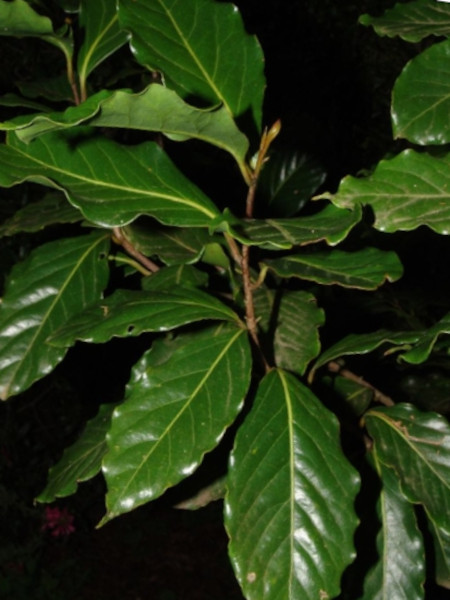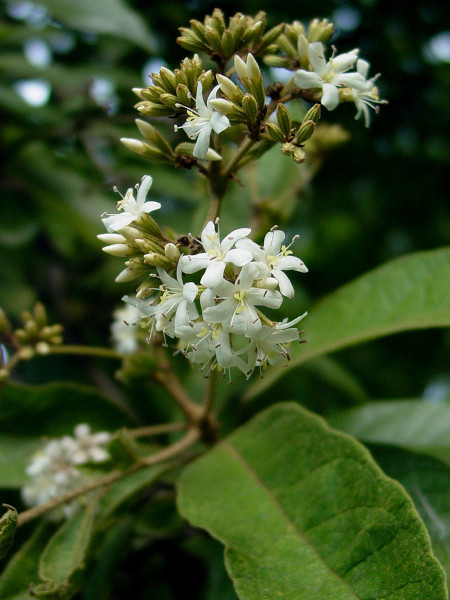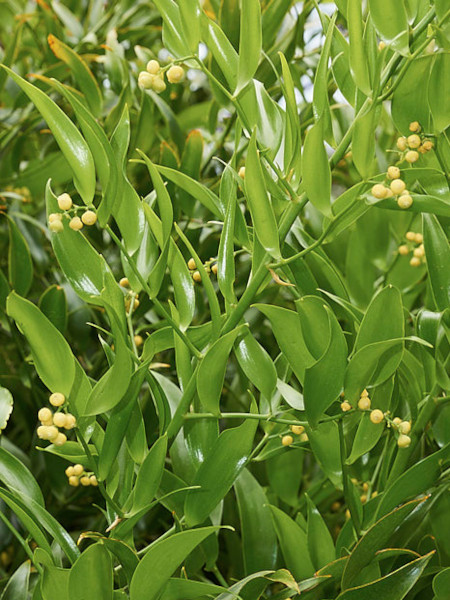(A three part series)
While Shakespeare is generally considered to have popularized ‘It’s all Greek to me’, I literally laughed aloud when I uncovered that the phrase’s origins are from the Latin Graecum est, non legitur (literally “It’s Greek; not readable”). That phrase was often included by Medieval scribes copying texts indicating that a particular passage could not be understood or read, which also would seem to relate to the my reasons for this article.

Gardeners often complain about the use of Latin naming in Botany. Why use a dead language? It just confuses things, right? Well, actually, the opposite was true at a particular point in time.
Latin was the language of the Roman Empire up until the early 5th century when the Visigoths sacked Rome and the Western half of the Empire fell. Constantine the Great (306-337) had previously divided the Roman Empire in half and relocated to Istanbul, which he renamed Constantinople. The Eastern Empire, which spoke predominantly Greek, continued after Rome fell until the 15th century.

Even during the former Roman empire, populations they ruled came to speak a vernacular form of Latin, different from that used by Roman clerics, sometimes referred to as Romaticus (i.e. ‘street Latin’). After the empire’s fall, these now more isolated regions evolved their languages in different directions, creating what are called the Romance Languages.

Latin and Greek was considered by Renaissance and Enlightenment scholars as the language of The Classics, ‘rediscovered’ after the Middle Ages. These writings inspired ‘new’ ways of thinking about the world. In order to be understood, becoming proficient in Latin (and Greek) was necessary. Among the new learned classes in Europe and Western Asia, this formerly dead language became a common mode of communication across their vernacular language barriers.
With the European exploration of world and many exciting ‘new’ things were discovered, communicating with interested peers in various other countries was now done in Latin. In this way, knowledge shared could be built upon by others – the beginnings of today’s scientific community.

Cleveland Museum of Natural History, Cleveland, Ohio, USA
Swedish Botanist Carl Linnaeus (1707-1778) is credited to have ‘invented’ the Latin binomial system. Latin, in fact, was already in use when he came along, but he simplified the complicated and confusing naming of things using Latin down to the basic ‘binomial’ (two-part) naming. One author’s Rosa sylvestris inodora seu canina and another’s Rosa sylvestris alba cum rubore, folio glabro (both being descriptions of the same plant), to a single binomial name – Rosa sylvestris.
BTW – Linnaeus is a Latinized form of his actual name – Carl von Linné.
So I haven’t answered the question? Why do we still use Latin at all?!? So called ‘common names’ may seem easier, but they have their own complications.
‘Common’ suggests that a name is used more often than others, but in truth, it can merely be a regional or ‘vernacular’ (local language) name. If a plant is useful, pretty, well-known, and/or has a wide distribution across various regions, it often comes to have multiple names applied to it.

For example, Amaryllis belladonna, a South African bulb which is called locally ‘maart lelie’ (‘March lily’ in Afrikaans) because it flowers around March which is autumn in the Southern Hemisphere. This bulb was transplanted into Portugal (whose mariners were the first to round the Western Cape) before it spread to other countries, and started acquiring new names! In Portugal, among various other names, A. belladonna is sometimes called ‘meninas para escola’ which translates to “girls going to school” – because children return to school in September and girls would commonly wore pink uniforms.
Depending on the English speaking country this beautiful flowers is spotted, it might be called ‘naked ladies’, ‘belladonna lily’, ‘Jersey lily’, ‘Guernsey Lily’. It has also recently been called ‘Surprise Lily’ because of the confusion between it and the summer growing, fall blooming Lycoris squamigera from China & Korea. Because of A. belladonna‘s fragrant flower, sprouting from bare ground in fall attracts much attention, it also attracts numerous names in various languages. Knowing that the Latin name for all of these is Amaryllis belladonna informs us that it is still the same plant.


‘Grecian Bay laurel’ (Laurus nobilis), ‘English laurel’ (Prunus laurocerasus), ‘California Bay laurel’ (Umbellularia californica), ‘New Zealand laurel’ (Corynocarpus laevigatus or Coprosma repens), ‘Japanese laurel’ (Aucuba japonica), ‘Cape laurel’ (Ocotea bullata), ‘Ecuador laurel’ (Cordia alliodora), and ‘French laurel’ (Danaë racemosa) would all seem closely related, but, you guessed it, they are not even all in the same plant family – nor should all of them be used in cooking!









Personally, I find common names fascinating because they represent a human connection to the natural world. When common names for a plant don’t exist, it can mean that it has yet to have captured our imagination. When there are a diversity of names, this might be due to the extended range where the plant is found. As stated, such names might be shared with or ‘borrowed’ from more than one plant, so it is important to have a specific Latin name to help us be sure we know what we’re talking about.
I have noticed a curious phenomenon in recent times. New plants have entered the horticultural trade locally from various botanical gardens and via amateur enthusiasts. Because these plants are new to cultivation in general, plant sellers have started turning the Latin species name into a ‘common’ name (since none existed). I find this very weird! Clearly it is more about marketing the plant than recording a naturally evolved name stemming from human interaction. It also caters to the general reticence to deal with Latin names.
Continued in It’s all Latin to me (part 2) – What should I make of these Latin binomial listings?
References and Links
Carl Linnaeus (1707-1778)
https://ucmp.berkeley.edu/history/linnaeus.html
Discover the Uppsala of Carl Linnaeus
https://www.linnean.org/learning/who-was-linnaeus/career-and-legacy
List of plants known as laurel
https://en.wikipedia.org/wiki/List_of_plants_known_as_laurel
